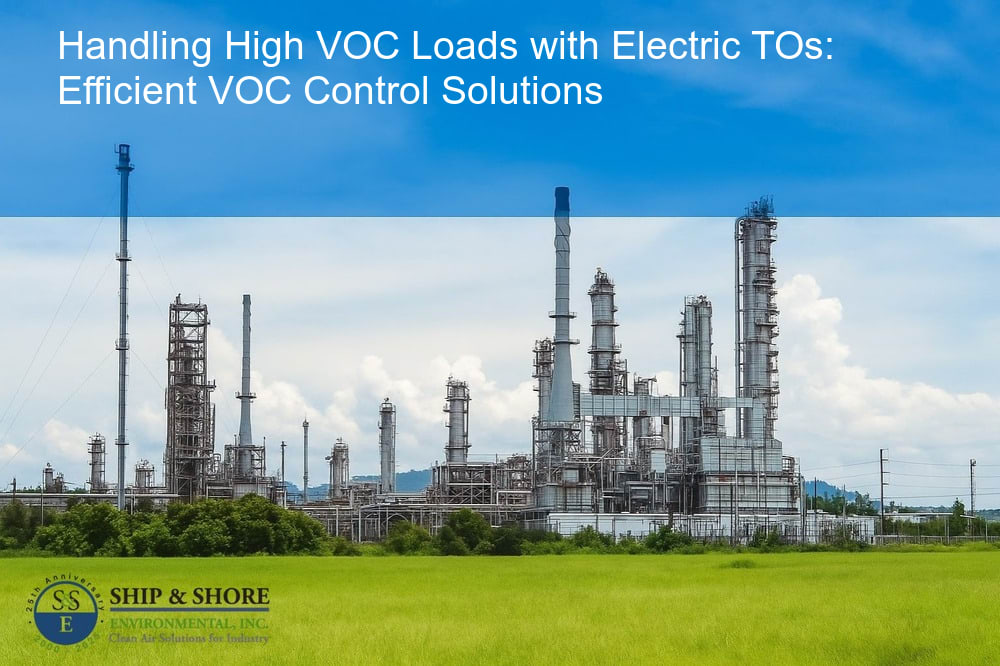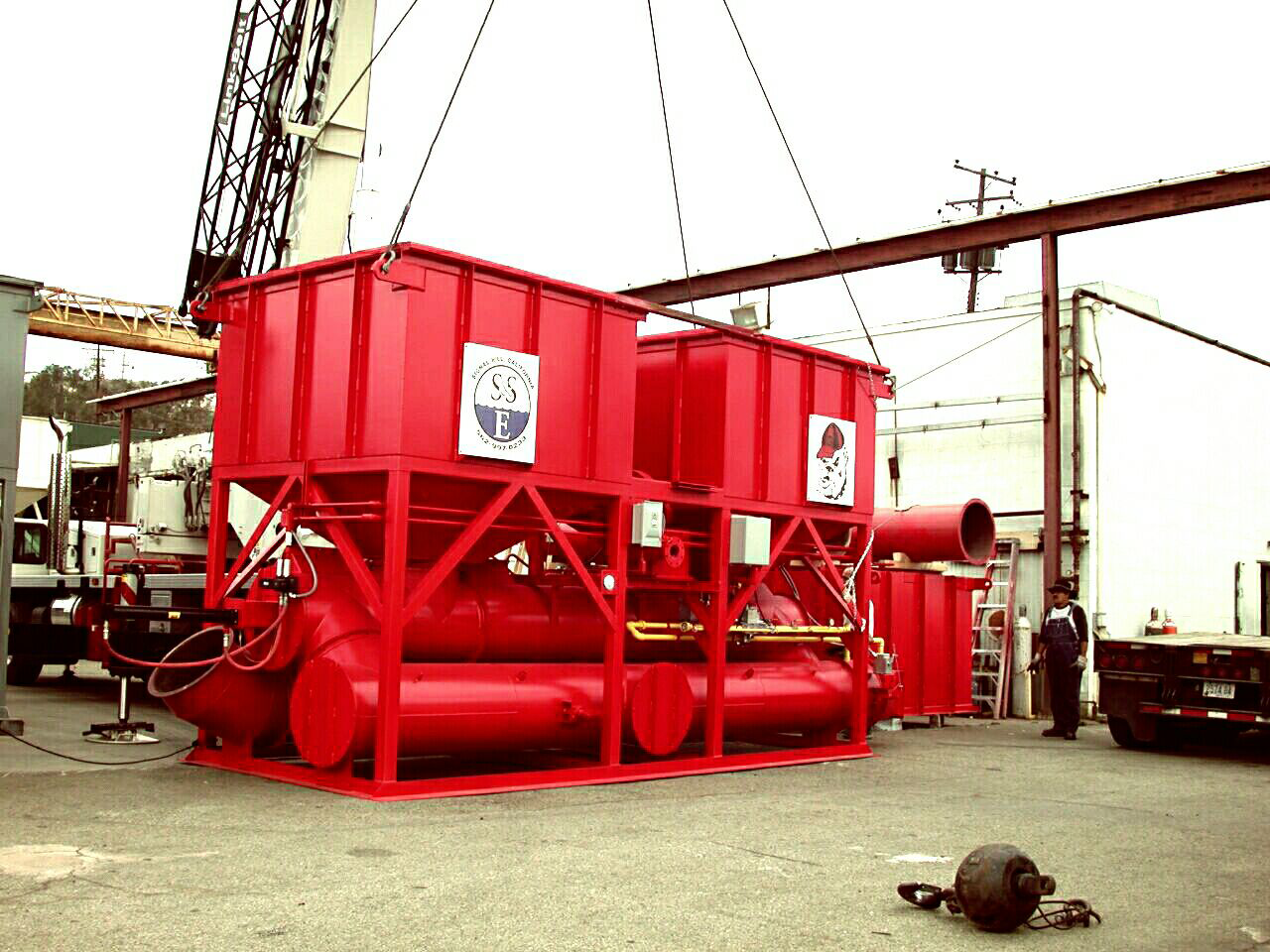
Handling High VOC Loads with Electric TOs: Eco-Efficiency Unlocked
July 16, 2025 2:49 amThe Growing Challenge of VOC Emissions in Industrial Settings
Handling high VOC loads with electric TOs is becoming an increasingly relevant topic as industries strive to meet stringent environmental regulations and reduce their carbon footprint. Volatile Organic Compounds (VOCs) are a significant concern due to their role in air pollution and their contributions to smog formation and adverse health effects. As industrial activities expand, the challenge of managing VOC emissions grows in complexity, necessitating innovative solutions that are both effective and sustainable.
Understanding the Role of Thermal Oxidizers in Combating VOCs
Thermal Oxidizers (TOs) have long been a cornerstone in the fight against VOC emissions. These devices operate by breaking down hazardous pollutants into less harmful components through high-temperature combustion. Traditional TOs, relying on fossil fuels, have been effective but come with their own set of environmental and operational drawbacks, such as high energy consumption and significant greenhouse gas emissions. This has paved the way for more eco-friendly alternatives.
Electric TOs: An Introductory Glimpse into Their Functionality and Benefits
Electric Thermal Oxidizers (Electric TOs) represent a breakthrough in VOC abatement technology. Unlike their fossil-fuel-powered counterparts, electric TOs utilize electricity to generate the necessary heat for the oxidation process. This transition brings several benefits, including improved energy efficiency, reduced operational costs, and a notable decrease in environmental impact. Industries are increasingly recognizing the potential of electric TOs in not only meeting but surpassing regulatory requirements for VOC control.
How Electric TOs Suit Industry Needs in Managing High VOC Loads
Electric Thermal Oxidizers (TOs) are becoming an essential solution for industries that regularly grapple with high volumes of Volatile Organic Compounds (VOCs). As the focus on environmental responsibility and regulatory compliance intensifies, using electric TOs offers many operational benefits. Efficiently, they convert harmful VOCs into harmless carbon dioxide and water vapor through thermal oxidation processes.
By leveraging electric heating elements, electric TOs provide a more precise and controllable heating environment compared to traditional gas-fired TOs. This efficiency translates into reduced operational costs and lowered environmental impact because electric TOs significantly cut down on greenhouse gas emissions. Consequently, industries handling high VOC loads can meet stringent emission standards and maintain sustainable practices.
The Functional Mechanism of Electric TOs in Achieving VOC Abatement
Understanding how electric TOs function is crucial for appreciating their efficacy in VOC abatement. The process begins when VOC-laden air is drawn into the system. The contaminated air is then preheated through a heat exchange process utilizing the energy from previously treated, now-clean air. This energy-efficient recycling significantly reduces the overall energy demand.
Once the preheated air enters the oxidation chamber, electric heating elements rapidly elevate the temperature to necessary levels (typically between 1,200°F and 1,800°F). At these high temperatures, VOC molecules break apart and undergo oxidation, transforming into less harmful substances. The high level of temperature control allows electric TOs to maintain consistent and optimal conditions for VOC destruction without the fluctuations common in gas-fired systems. Importantly, the resultant exhaust can undergo further filtering or scrubbing, ensuring cleaner emissions.
Comparison Between Electric TOs and Other TO Varieties in Dealing with High VOC Loads
When dealing with high VOC loads, various types of thermal oxidizers are available, yet electric TOs provide distinct advantages over their counterparts. Below is a comparison detailing the strengths and weaknesses:
- Electric TOs vs. Gas-fired TOs: Electric TOs offer better temperature control, leading to more efficient and complete VOC destruction. They also reduce reliance on fossil fuels, thus lowering greenhouse gas emissions. Conversely, gas-fired TOs can be susceptible to temperature fluctuations and require constant fuel supply.
- Electric TOs vs. Catalytic TOs: While catalytic TOs operate at lower temperatures by using a catalyst to aid the oxidation process, they often require high maintenance and potential catalyst replacement. In contrast, electric TOs can provide a stable functioning environment without the need for costly catalyst materials.
- Electric TOs vs. Regenerative TOs: Regenerative TOs excel in energy recovery efficiency but can be complex and bulky, making them less suitable for sites with space constraints. Electric TOs, however, offer a more compact design and simpler operation without sacrificing efficiency.
Handling high VOC loads with electric TOs ensures not just regulatory compliance but also fosters operational efficiency and environmental sustainability. This innovative approach allows industries to remain competitive while adhering to increasingly stringent emissions standards.
Did you know? Electric Thermal Oxidizers (TOs) are rising as eco-friendly alternatives for industrial VOC removal, offering high efficiency in treating especially high VOC loads.
Embracing Electric Thermal Oxidizers for a Greener Future
As leaders in providing environmental solutions, we recognize the mounting necessity for industrial operations to manage volatile organic compound (VOC) emissions efficiently. Electric Thermal Oxidizers (TOs) stand as a paramount choice in this endeavor, offering a synergistic blend of environmental responsibility and operational efficacy.
The Strategic Advantage of Electric TOs in VOC Management
Electric TOs present a transformative approach to VOC abatement. Unlike traditional methods, electric TOs leverage clean electrical energy to initiate the oxidation process, significantly reducing the carbon footprint associated with VOC treatment. This is pivotal in industries where high VOC loads are a constant challenge and sustainability is a key operational goal.
Our experience in deploying electric TO technology underscores its efficacy. These systems ensure the destruction of VOCs through high-temperature oxidation, converting harmful organic compounds into benign byproducts such as carbon dioxide and water vapor. The result is not only compliance with stringent environmental regulations but also a significant minimization of adverse environmental impacts.
A Comparative Perspective: Electric TOs vs. Conventional TOs
When juxtaposed with other thermal oxidizers, electric TOs offer superior performance in handling high VOC loads. Traditional TOs often rely on fuel combustion to generate necessary heat, leading to higher greenhouse gas emissions and operational costs. In contrast, electric TOs utilize electric heating elements, providing precise temperature control and fostering more efficient oxidation processes.
Moreover, the operational flexibility of electric TOs allows for seamless integration into various industrial settings, from chemical manufacturing to automotive painting operations. Their scalability and adaptability make them particularly suitable for industries that experience fluctuating VOC levels and require responsive emission control solutions.
Proven Success: A Case Study in Effective VOC Control
Our case studies illustrate the tangible benefits of adopting electric TOs. For instance, a recent implementation in a large manufacturing facility showcased remarkable reductions in VOC emissions, aligning with our client’s environmental stewardship objectives. The project not only underscored the operational efficiency of electric TOs but also highlighted substantial cost savings through reduced energy consumption and maintenance demands.
Looking Ahead: Innovations and Future Trends
The landscape of VOC control is continuously evolving, and so are the technologies we deploy. Continued advancements in electric TO design promise even greater efficiencies and environmental benefits. Innovations such as enhanced heat recovery systems and automated control algorithms are poised to redefine the benchmarks for VOC abatement efficacy.
In conclusion, handling high VOC loads with electric TOs is not just a choice for immediate compliance but a strategic investment in long-term sustainability. By embracing this technology, industries can achieve meaningful reductions in emissions, energy use, and operational costs. As we spearhead the adoption of electric thermal oxidizers, we invite industry stakeholders to join us in this eco-friendly transition, driving forward a future where effective VOC management and environmental responsibility go hand in hand.
FAQ
What benefits do Electric Thermal Oxidizers (TOs) offer for VOC control in industrial settings?
Electric TOs provide numerous benefits for VOC control, including improved environmental performance due to their reliance on clean electrical energy. This method results in significantly lower greenhouse gas emissions compared to traditional methods that burn fuel. Additionally, electric TOs offer precise temperature control for more efficient oxidation, leading to higher VOC destruction rates, compliance with environmental regulations, and potentially reduced operational costs.
How do Electric TOs compare to other types of Thermal Oxidizers in managing high VOC loads?
Compared to conventional thermal oxidizers, electric TOs have a distinct advantage in handling high VOC loads due to their electric heating elements, which offer more precise temperature management and improved efficiency. While traditional TOs often require fuel combustion that can increase greenhouse gas footprint and operational costs, electric TOs align well with sustainability initiatives and cost-effectiveness.
Can Electric TOs be integrated into various industrial operations?
Yes, electric TOs are highly adaptable and can be seamlessly incorporated into a wide range of industrial processes. Their operational flexibility makes them well-suited for industries like chemical manufacturing and automotive painting, especially where VOC levels can fluctuate, requiring a responsive and efficient emissions control solution.
Are there any case studies that demonstrate the success of Electric TOs in reducing VOC emissions?
We have documented case studies that highlight the effectiveness of electric TOs in significant reductions of VOC emissions. For example, in a deployment at a large manufacturing facility, the emissions were markedly lowered, achieving the client’s goals for environmental stewardship, while also realizing cost savings in energy consumption and maintenance.
What future developments are anticipated in the field of Electric TO technology?
The future of electric TO technology holds promising advancements, including enhanced heat recovery systems and sophisticated automated control algorithms. These innovations are expected to deliver even greater efficiencies and environmental benefits, setting new standards for the efficacy of VOC abatement processes.
Categorised in: Blog

